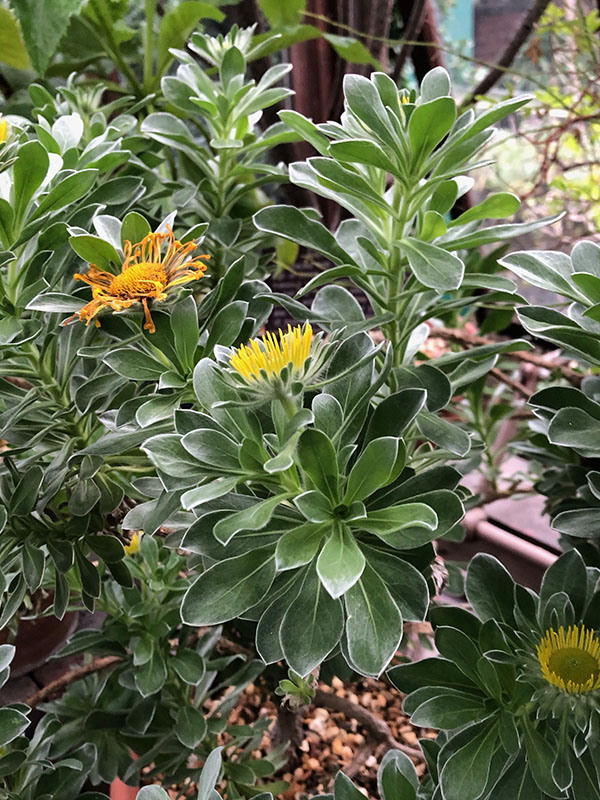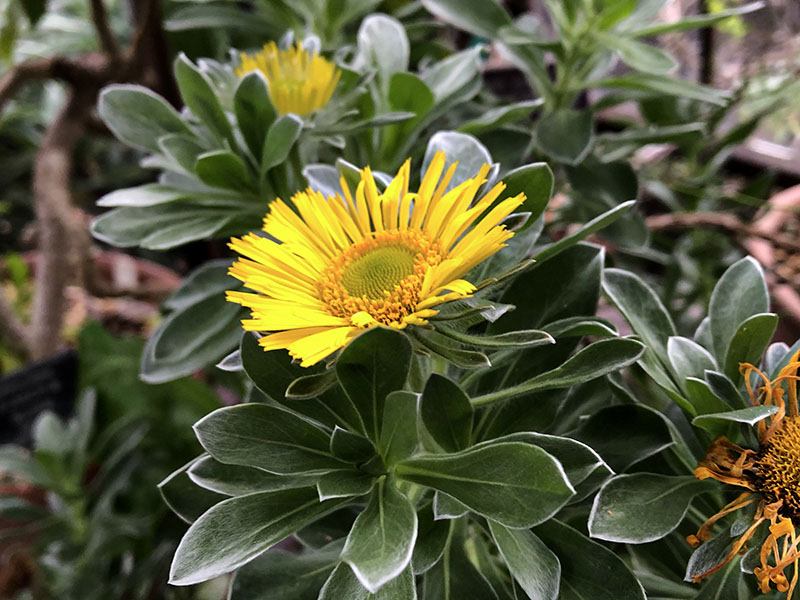| General Description | Large, bright, yellow flowers bloom atop dark grey stems. The plant has broad, rounded leaves with a dark, pale green tone. |
| Shape | Early growth as a dense mound, but as the plant ages it begins to become more upright. |
| Landscape | Flower beds, single specimen, container, succulent garden, shrub garden. |
| Propagation | Propagate from seed. |
| Cultivation | Plant in full sun in well-drained soil and water sparingly. |
| Pests | No notable pests or diseases. |
| Notable Specimens | Chelsea Physic Garden, London, United Kingdom. |
| Habitat | Grows in mountains and along rocky coasts at about 700 m above sea level. |
| Bark/Stem Description | Dark grey in colour. |
| Leaf Description | Flat formed leaves have a silver and light green colouring. Length of leaves vary between 2.5 - 5 cm. Leaves contain some hairs contributing to a slightly fuzzy appearance/texture. |
| Flower Description | Yellow petals measuring about 7.5 cm wide, with a star-like shape blooming between late winter and early summer. |

